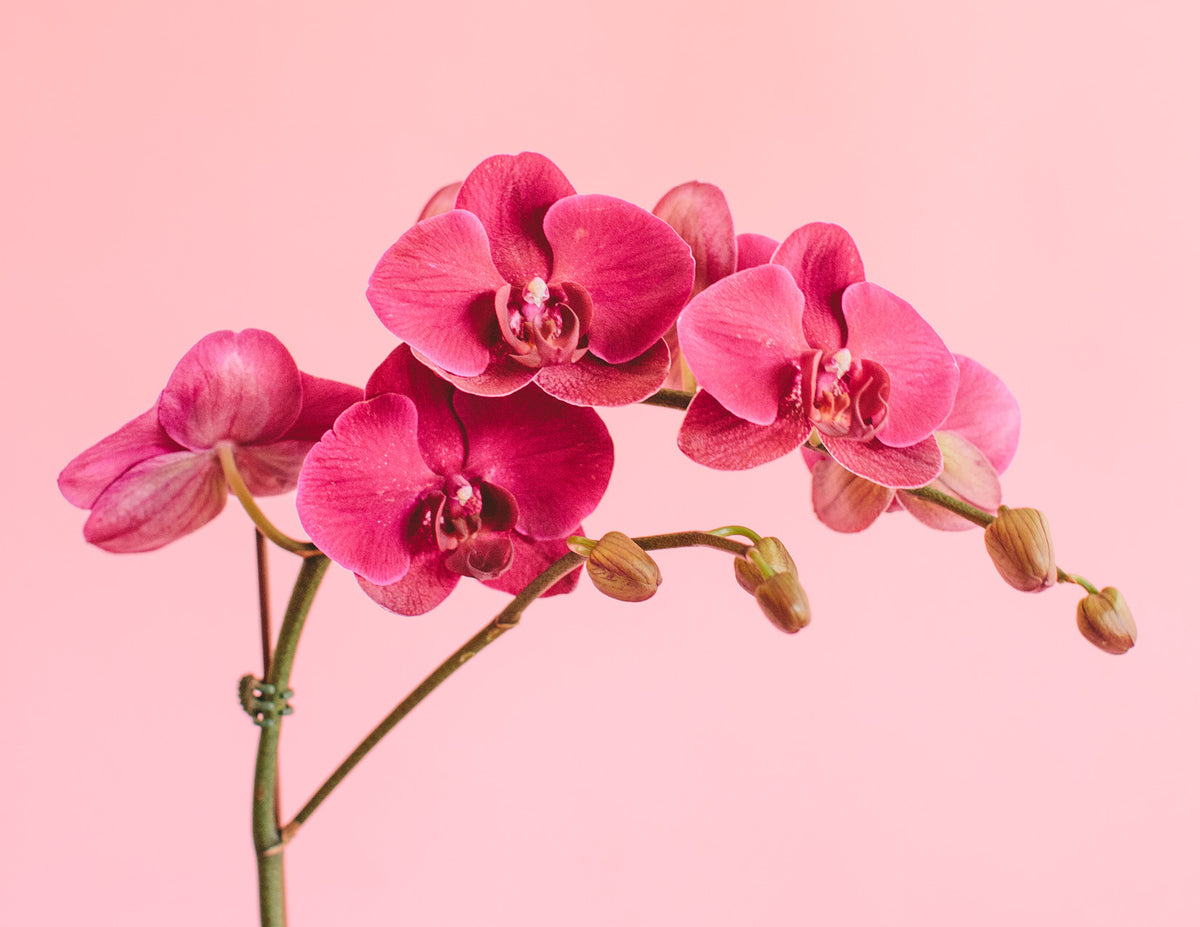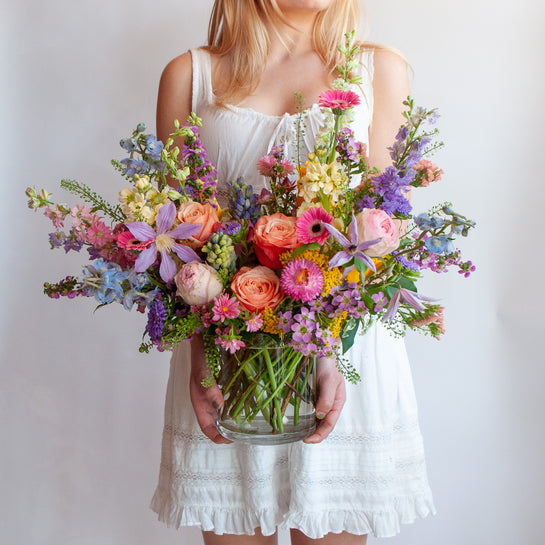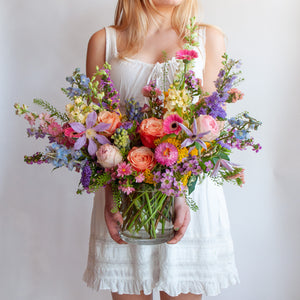
It's Feature Flower Friday! And much like our buddy, Anthurium, you can find this one both in our floral arrangements and as a potted houseplant in our shops.
Believe it or not, scientists have dated orchids all the way back to the Jurassic period (cut to: a t-rex with an orchid in its tiny, little hand). As you can imagine, these blooms have had quite a while to spread across the globe, making it one of the larger families in the plant Kingdom (like the Lanisters, but less menacing).
While many flowers have radial symmetry (equally spaced flowers around a center), orchids have bilateral symmetry, similar to people, where often one side approximately mirrors the other. However, because they're soooo beautiful, people have done what people do best and loved them to death a little. For this reason, many orchids are endangered, and most are forbidden to be removed/collected from their natural habitat. The orchids you see in our shop and arrangements have been propagated from seeds and cultivated in captivity in order to leave the natural ones in nature.
This flower also has a somewhat saucy history. People in the past used them as an aphrodisiac (though the science is out on the effectiveness) and the name even comes from the Greek word Orkhis, which translates to "testicles." Because of course they did.
Checking out your orchid's exposed roots is a good way to tell how you're doing on the watering front. After a fresh drink, they'll appear greenish. When they're still healthy but not recently watered, they'll be white. It's once they get mushy (from overwatering) or tan/brittle (underwatering) that you should be slightly concerned. Additionally, if the tips of the roots turn black (instead of green), it may indicate too much salt. Such expressive roots!
For our flower arrangements, we love to use Cymbidium, Oncidium, and Mokara orchids, and we often carry potted Phalaenopsis (aka Moth Orchids) in the shops. If you're lucky enough to receive an arrangement with orchids in it, note that they are generally longer-lasting than the arrangement, so you can pull them out and enjoy them on their own once the other flowers have passed.








